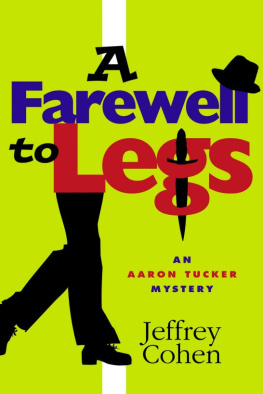Aaron N. Shugar - Archaeometallurgy in Mesoamerica
Here you can read online Aaron N. Shugar - Archaeometallurgy in Mesoamerica full text of the book (entire story) in english for free. Download pdf and epub, get meaning, cover and reviews about this ebook. year: 2012, publisher: University Press of Colorado, genre: Politics. Description of the work, (preface) as well as reviews are available. Best literature library LitArk.com created for fans of good reading and offers a wide selection of genres:
Romance novel
Science fiction
Adventure
Detective
Science
History
Home and family
Prose
Art
Politics
Computer
Non-fiction
Religion
Business
Children
Humor
Choose a favorite category and find really read worthwhile books. Enjoy immersion in the world of imagination, feel the emotions of the characters or learn something new for yourself, make an fascinating discovery.

- Book:Archaeometallurgy in Mesoamerica
- Author:
- Publisher:University Press of Colorado
- Genre:
- Year:2012
- Rating:5 / 5
- Favourites:Add to favourites
- Your mark:
- 100
- 1
- 2
- 3
- 4
- 5
Archaeometallurgy in Mesoamerica: summary, description and annotation
We offer to read an annotation, description, summary or preface (depends on what the author of the book "Archaeometallurgy in Mesoamerica" wrote himself). If you haven't found the necessary information about the book — write in the comments, we will try to find it.
Archaeometallurgy in Mesoamerica — read online for free the complete book (whole text) full work
Below is the text of the book, divided by pages. System saving the place of the last page read, allows you to conveniently read the book "Archaeometallurgy in Mesoamerica" online for free, without having to search again every time where you left off. Put a bookmark, and you can go to the page where you finished reading at any time.
Font size:
Interval:
Bookmark:
in Mesoamerica
AND NEW PERSPECTIVES
Aaron N. Shugar
AND Scott E. Simmons
Boulder
5589 Arapahoe Avenue, Suite 206C
Boulder, Colorado 80303
Printed in the United States of America
 The University Press of Colorado is a proud member of the Association of American University Presses.
The University Press of Colorado is a proud member of the Association of American University Presses. This paper meets the requirements of the ANSI/NISO Z39.48-1992 (Permanence of Paper).
This paper meets the requirements of the ANSI/NISO Z39.48-1992 (Permanence of Paper).Aaron N. Shugar and Scott E. Simmons.
pages cm
Includes bibliographical references and index.
ISBN 978-1-60732-200-9 (cloth : alkaline paper) ISBN 978-1-60732-210-8 (ebook) (print)
1. Indian metal-workMexicoHistoryTo 1500. 2. Indian metal-workAmerica,
CentralHistoryTo 1500. 3. Metallurgy in
archaeologyMexico. 4. Metallurgy in archaeologyAmerica, Central. 5. Indians of MexicoAntiquities. 6. Indians of Central
AmericaAntiquities. 7. Excavations (Archaeology)Mexico. 8. Excavations (Archaeology)
America, Central. I. Shugar, Aaron N. II. Simmons, Scott E.
F1219.3.M52A73 2013
972.01dc23
2012038984
Font size:
Interval:
Bookmark:
Similar books «Archaeometallurgy in Mesoamerica»
Look at similar books to Archaeometallurgy in Mesoamerica. We have selected literature similar in name and meaning in the hope of providing readers with more options to find new, interesting, not yet read works.
Discussion, reviews of the book Archaeometallurgy in Mesoamerica and just readers' own opinions. Leave your comments, write what you think about the work, its meaning or the main characters. Specify what exactly you liked and what you didn't like, and why you think so.




